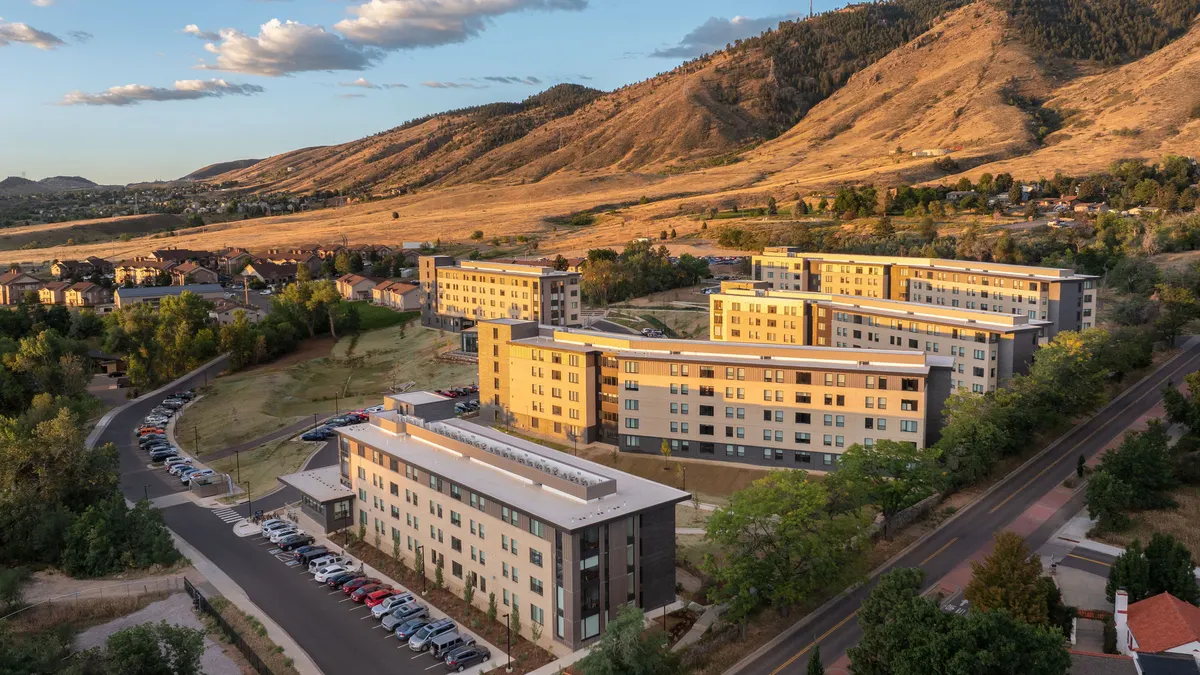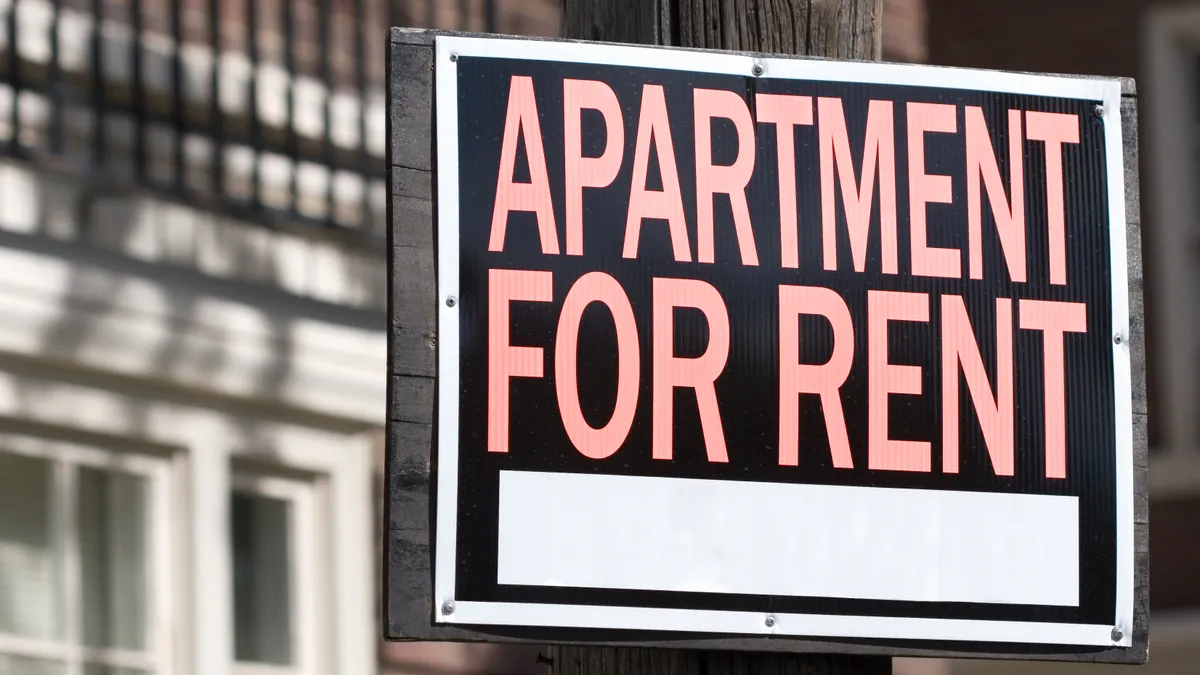After a few strong years, student housing sent mixed signals as the 2025-2026 school year approached.
Preleasing reached 85.3% in June across the 200 markets tracked by Yardi Matrix. Fifty schools passed the 90% threshold, according to its latest Student Housing Report. However, rent growth continued to decelerate, increasing only 1.3% year over year — the slowest pace since 2021.
Still, some student operators have reported a solid start to the year. “Across our portfolio, we’ve seen a modest increase in year-over-year pre-leasing velocity, and our rent growth continues to exceed historical norms, signaling a stable and resilient leasing environment,” said Miles Orth, executive vice president and chief operating officer at Philadelphia-based student housing owner and operator Campus Apartments.
But there are some ominous clouds on the horizon for student operators.
The One Big Beautiful Bill Act, signed into law by President Trump on July 4, cuts $300 billion in federal support to college students over a 10-year period. In addition, the Trump administration's immigration policies could limit international enrollment at U.S. colleges by as many as 150,000 students this fall, according to NAFSA: Association of International Educators.
In this environment, student housing firms are remaining nimble and focusing on delivering excellent customer service and meeting student preferences.
“We’re preparing for the 2025–2026 academic year by closely tracking market conditions, sharpening our property-level strategies and staying highly responsive to evolving student demand,” Orth said.
Here are three ways student housing firms have prepared for the 2025-2026 school year:
Starting early
While students are moving into dorms at colleges and universities around the country this month, student housing providers started planning well in advance.
“Behind every smooth move-in is a strategy that starts long before students arrive,” said Lindsey Bright, senior vice president of operations for St. Louis-based student housing developer, owner and manager Subtext. “From detailed planning to team training, we’ve been working for months behind the scenes to make the process as simple and stress-free for residents as possible.”

Landmark Properties’ across-the-board focus is to start early in the move-in preparation and planning process, according to Rob Dinwiddie, executive vice president of marketing and management services at the Athens, Georgia-based residential owner, manager and developer.
“Most of our apartment communities are starting their prep work for turnover and move-in as early as February for the July and August move-in scenario,’ Dinwiddie said.
At Asset Living, preparation for the new school year has been underway for much of this last academic year, with the company “starting earlier and earlier,” according to Stacey Lecocke, division president at the Houston-based property manager.
“We are also continuing to invest in enhanced training to ensure teams are positioned to hit the ground running ahead of the leasing season,” Lecocke said.
Pleasing the parents
Student housing providers’ monthslong quest to prepare for move-in day isn’t just about the kids. “Move-in is a significant moment, not just for students, but also for parents, so everything we do is designed to create confidence and peace of mind from the start,” Bright said.
In reality, student housing providers only get a few interactions each year with parents. So it's critically important they make sure those in-person meetings are positive. “Move-in and move-out are those two touchpoints across the portfolio where we can really impact that experience for the parent,” Dinwiddie said.

If those interactions are handled well, there are lots of benefits, especially if parents have more than one child. “We see across our portfolio that many parents have students living with us at multiple properties,” Dinwiddie said. “If we do a great job at a property at the University of Georgia, there's a high likelihood that translates into a sibling who moves in with us in another property later on.”
Creating that positive experience doesn’t necessarily mean more in-person interactions. Landmark, like many student housing firms, has taken steps to remove friction from the process.
“On-campus residence hall move-ins are notorious for being a clunky process with really long lines and not a thing that feels easy and seamless,” Dinwiddie said. “So our organizational focus is on taking the opposite approach and trying to create a drive-through move-in so that students can get credentials, keys and access to their apartment without ever leaving their vehicle.”
Landmark has seen resident satisfaction improve with this process, according to Dinwiddie. “We exceed the parents' expectations, in particular, because usually the parents are the ones helping those students move in with us,” he said.
Adjusting services and amenities
In a competitive environment, service can be a differentiator. For Landmark that also starts on move-in day. The company prides itself on having surprises for both parents and students.
“We'll have refreshment stations with adult beverages for parents,” Dinwiddie said. “That's something that we do across the board, and nobody expects it. But it's something that comes across as above and beyond.”
To stay ahead of the competition, student housing firms are also evaluating their amenities and property features to enhance their offerings.
“Our preparation for this cycle centers around making sure our properties offer the privacy, convenience and amenities today’s students expect,” Campus Apartments’ Orth said. “This includes reevaluating our policies to best align with student preferences.”

Recently, Orth said students have shown an interest in wellness-focused features, such as fitness spaces, study lounges and access to mental health resources. “These preferences inform both how we operate and how we allocate capital across the portfolio,” he said.
But even if student firms invest in cutting-edge amenities, they can't forget the fundamentals, according to Subtext’s Bright.
“The best amenities or coolest features don’t matter if we’re not there to answer questions, resolve issues quickly or keep the property in top shape,” Bright said. “We’re rethinking how we allocate time and energy, shifting away from large, resource-heavy events in favor of meaningful, high-impact touchpoints that genuinely enhance the resident experience.”
Click here to sign up to receive multifamily and apartment news like this article in your inbox every weekday.





















